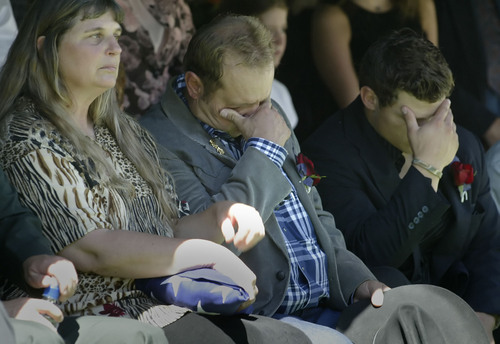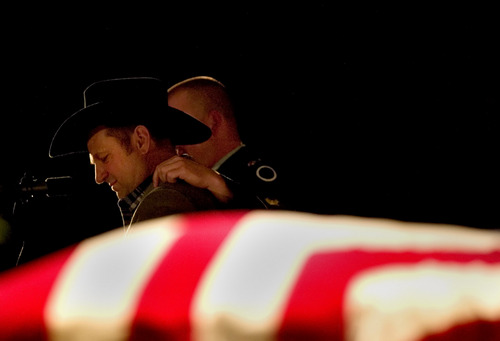This is an archived article that was published on sltrib.com in 2014, and information in the article may be outdated. It is provided only for personal research purposes and may not be reprinted.
This summer, the U.S. Department of Veterans Affairs will begin looking for a location in southwest Utah to build a cemetery for rural veterans.
The VA wants three to six acres, said Glenn Madderom, chief of cemetery development service for the National Cemetery Administration, which is part of the VA.
The preferred location is in, or adjacent to, an existing cemetery, but Madderom said the VA will build a cemetery from scratch if it must.
"We would be looking in that corridor between St. George and Cedar City, but focusing more on Cedar City," Madderom said.
The cemetery would actually be called a veterans' "burial ground." It is part of a VA initiative to provide a final resting place for veterans in rural regions.
The VA just signed an agreement with Yellowstone County, Mont., to install a burial grounds in a cemetery there. And the VA also is looking for a suitable spot for a burial grounds in or near Twin Falls, Idaho.
A burial grounds for rural Utah is in line behind Montana and Idaho. Madderom said there's no timetable to install the Utah burial grounds. Any opening would be several years away, he said.
Utah is one of 11 states with no national veterans' cemetery. The state, however, maintains a veterans' cemetery in Bluffdale.
Arnold Warner, supervisor at the state veterans' cemetery, said 4,971 veterans and spouses were interred there as of Wednesday. Five to 12 people a week are buried or have their remains scattered there, Warner said.
Warner said many veterans are buried there because of cost. Services, a headstone and burial at the veterans' cemetery are free for the veteran and costs $700 for a spouse. A private funeral can cost thousands of dollars.
Warner says a burial grounds in Cedar City would benefit families who don't want to travel long distances to bury their loved one. He said the Bluffdale cemetery receives one or two veterans a month from as far away as St. George.
Veterans from "St. George; Las Vegas, Nevada, they would probably go to the Cedar City one, instead of coming here," Warner said.
In 2005, Army Sgt. 1st Class Ronald T. Wood was killed in Iraq. His parents held the funeral in Cedar City but buried him in Hurricane.
Wood's father, Ron Wood, on Thursday said he would have elected to bury his son next to family in Hurricane, even if there had been a burial grounds in Cedar City.
But Wood — who has other family members who have served in American wars, as well as an uncle who fought in World War II and who wants to be buried at Arlington National Cemetery — was supportive of burial grounds in Cedar City.
"That's kind of neat," Wood said. "There's a lot of guys from southern Utah that fought in the wars."
Twitter: @natecarlisle —
What a veterans' burial ground would include
— Three to 6 acres to inter veterans' caskets
— Columbarium niches (for the storage of urns holding a deceased's cremated remains)
— Front entrance feature like gates
— A flag pole 75 to 80 feet tall
— An area set aside for statutes or monuments donated by veterans' groups
— The VA would probably issue a contract for someone, or a municipality, to maintain the grounds
Source: Glenn Madderom







